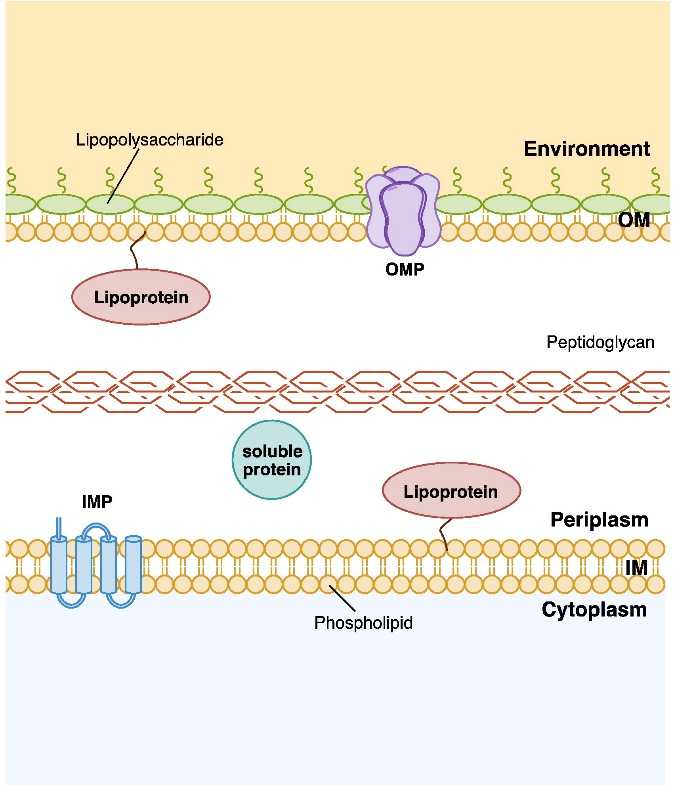Protein-Protein Interaction Networks (PPI) are composed of proteins that interact with participating in all aspects of life processes such as biological signal transmission, gene expression regulation, energy and material metabolism, and cell cycle regulation. Analyzing the interaction of proteins in biological systems is of great significance for understanding the working principle of proteins in biological systems, understanding the response mechanism of biological signals and energy metabolism under special physiological conditions such as diseases, and understanding the functional connections between proteins and proteins. With the development of technology, the detection methods of protein-protein interaction are gradually optimized and updated. Although the interactions in the cytoplasm of various organisms have been extensively studied, the studies on the interactions in the periplasm are still minimal.
 Fig.1 General structure of the E. coli envelope
Fig.1 General structure of the E. coli envelope
Periplasmic space is also known as periplasmic or parietal space. Gram-negative bacteria generally refer to the narrow space between the outer membrane and the cell wall, which is gelatinous. The periplasmic space is a particular "organelle" unique to prokaryotes. A variety of proteins is contained in the periplasmic space, such as Hydrolytic enzymes, synthetic enzymes, binding proteins, and receptor proteins. Therefore, periplasmic space could provide a good environment for protein engineering and interaction detective. Compared with other methods for PPI detection, the periplasm system showed a lot of advantages. First, the periplasm facilitates protein expression, isolation, and purification; Second, the oxidative environment in the periplasm is conducive to the correct folding of proteins; And finally, the post-translational modification could be demonstrated in the periplasm.
Profacgen could provide a protein-protein interaction detective based on the particular periplasm detection system to support your protein research, which could provide a new idea for your project.
Profacgen is a company dedicated to research in the biological field. We have been committed to discovering advanced experimental techniques to provide stronger support for our customers' research. Please do not hesitate to contact us for more details if you are interested in this new method, and we will provide considerate service for you. At the same time, we also offer other protein interaction detection methods; please move to our website for more details on protein-protein interaction.
Reference
Fill out this form and one of our experts will respond to you within one business day.